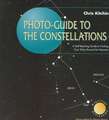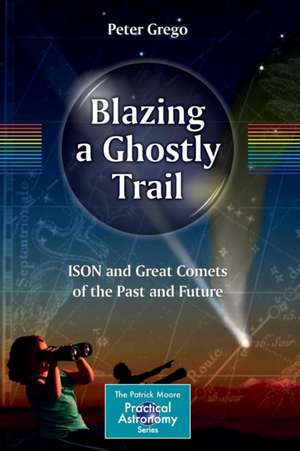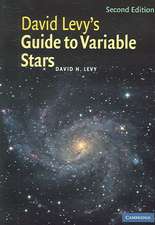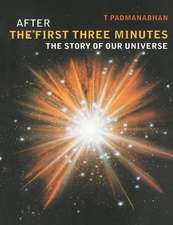Blazing a Ghostly Trail: ISON and Great Comets of the Past and Future: The Patrick Moore Practical Astronomy Series
Autor Peter Gregoen Limba Engleză Paperback – 30 oct 2013
Skywatchers have already been primed for C/2012 (ISON) earlier in 2013 with the apparition of another naked-eye comet, C/2011 L4 (PanSTARRS), and following C/2012 S1 (ISON) there is the prospect of 2012 K1 (PanSTARRS) reaching naked eye visibility in August 2014. Future bright cometary prospects are also discussed, taking into account the latest predictions.
Examining the origin and nature of comets using examples of great comets from the past, this book sets the scene for the arrival of Comet C/2012 S1 and those following it over the next few years in the inner Solar System. Skywatchers and amateur astronomers can learn how to follow, observe and record comets. There is also a guide on how to keep abreast of the latest cometary discoveries and how to use a variety of reputable sources, including publications, websites, programs and apps to visualize and plan observations. The role of the amateur in cometary discovery also is featured, as well as details on how professional astronomers plan to get the most ‘science’ out of cometary apparitions, how and why professionals go about discovering comets, and upcoming plans to visit comets with space probes (and later, perhaps, human visits). Illustrations provide historic images of comets, images from space probes and images of the latest bright comets. Orbital plots and easy-to-follow sky charts are also included.
This book is a unique guide that sets the scene by giving a comprehensive history of comets and examples of great comets throughout history and informs the reader about the nature and originsof this spectacular occurence. Expectations are fully covered by explaining not only what the regular person can expect to see, but how amateur astronomers can plan observations and what steps the professionals are taking to ‘get the most science’ from this exciting event.
Din seria The Patrick Moore Practical Astronomy Series
-
 Preț: 258.21 lei
Preț: 258.21 lei -
 Preț: 164.94 lei
Preț: 164.94 lei -
 Preț: 324.21 lei
Preț: 324.21 lei -
 Preț: 255.10 lei
Preț: 255.10 lei - 8%
 Preț: 581.98 lei
Preț: 581.98 lei -
 Preț: 159.16 lei
Preț: 159.16 lei -
 Preț: 282.38 lei
Preț: 282.38 lei -
 Preț: 308.55 lei
Preț: 308.55 lei -
 Preț: 309.87 lei
Preț: 309.87 lei -
 Preț: 332.98 lei
Preț: 332.98 lei -
 Preț: 276.91 lei
Preț: 276.91 lei -
 Preț: 243.94 lei
Preț: 243.94 lei -
 Preț: 183.40 lei
Preț: 183.40 lei -
 Preț: 378.09 lei
Preț: 378.09 lei -
 Preț: 302.20 lei
Preț: 302.20 lei -
 Preț: 210.01 lei
Preț: 210.01 lei -
 Preț: 212.68 lei
Preț: 212.68 lei -
 Preț: 271.39 lei
Preț: 271.39 lei -
 Preț: 252.91 lei
Preț: 252.91 lei -
 Preț: 281.95 lei
Preț: 281.95 lei -
 Preț: 289.85 lei
Preț: 289.85 lei -
 Preț: 218.84 lei
Preț: 218.84 lei -
 Preț: 282.38 lei
Preț: 282.38 lei -
 Preț: 128.86 lei
Preț: 128.86 lei -
 Preț: 301.10 lei
Preț: 301.10 lei -
 Preț: 204.78 lei
Preț: 204.78 lei -
 Preț: 307.44 lei
Preț: 307.44 lei -
 Preț: 303.07 lei
Preț: 303.07 lei -
 Preț: 258.83 lei
Preț: 258.83 lei -
 Preț: 155.25 lei
Preț: 155.25 lei -
 Preț: 193.97 lei
Preț: 193.97 lei -
 Preț: 208.26 lei
Preț: 208.26 lei -
 Preț: 279.09 lei
Preț: 279.09 lei -
 Preț: 303.51 lei
Preț: 303.51 lei -
 Preț: 277.54 lei
Preț: 277.54 lei -
 Preț: 208.51 lei
Preț: 208.51 lei -
 Preț: 214.86 lei
Preț: 214.86 lei -
 Preț: 304.58 lei
Preț: 304.58 lei -
 Preț: 220.57 lei
Preț: 220.57 lei -
 Preț: 157.32 lei
Preț: 157.32 lei -
 Preț: 275.98 lei
Preț: 275.98 lei -
 Preț: 288.98 lei
Preț: 288.98 lei -
 Preț: 261.49 lei
Preț: 261.49 lei -
 Preț: 279.09 lei
Preț: 279.09 lei -
 Preț: 160.82 lei
Preț: 160.82 lei -
 Preț: 327.01 lei
Preț: 327.01 lei -
 Preț: 254.90 lei
Preț: 254.90 lei -
 Preț: 304.38 lei
Preț: 304.38 lei -
 Preț: 256.84 lei
Preț: 256.84 lei
Preț: 218.42 lei
Nou
Puncte Express: 328
Preț estimativ în valută:
41.80€ • 43.48$ • 34.51£
41.80€ • 43.48$ • 34.51£
Carte tipărită la comandă
Livrare economică 15-29 aprilie
Preluare comenzi: 021 569.72.76
Specificații
ISBN-13: 9783319017747
ISBN-10: 3319017748
Pagini: 294
Ilustrații: XIV, 294 p. 221 illus., 136 illus. in color.
Dimensiuni: 155 x 235 x 17 mm
Greutate: 0.45 kg
Ediția:2014
Editura: Springer International Publishing
Colecția Springer
Seria The Patrick Moore Practical Astronomy Series
Locul publicării:Cham, Switzerland
ISBN-10: 3319017748
Pagini: 294
Ilustrații: XIV, 294 p. 221 illus., 136 illus. in color.
Dimensiuni: 155 x 235 x 17 mm
Greutate: 0.45 kg
Ediția:2014
Editura: Springer International Publishing
Colecția Springer
Seria The Patrick Moore Practical Astronomy Series
Locul publicării:Cham, Switzerland
Public țintă
Popular/generalCuprins
Introduction: Setting the scene for C/2012 S1 (ISON) and incoming comets.- What is a comet and where do they come from? (Primordial leftovers, Oort Cloud, etc).- Portents of change and doom (historical perspectives on comets, myths and superstitions, end of world predictions, hyperbole).- Great comets (including Halley’s Comet, Ikeya-Seki, IRAS-Araki-Alcock, Hyakutake, Hale-Bopp, McNaught, etc).- Comets up close observations by space probes (VeGa, Giotto, ICE, Deep Impact, etc).- C/2012 S1 and selected bright comets of the future (discovery, magnitude predictions, paths through Solar System).
Notă biografică
Peter Grego began his astronomical writing career by producing around 50 articles on astronomy and observing for the Birmingham (UK) Astronomical Society Journal (1982-1991). Through the years he has had dozens of articles appear in various publications, including Popular Astronomy, Sky & Telescope, Astronomy Now, Sky at Night magazine, Amateur Astronomy and Space Sciences, Fortean Times, Selenology, Gnomon, The Lunar Observer, The New Moon, The Encyclopedia of Astronomy and Astrophysics, Window on the Universe CD-ROMs, and Hoshinavi. He has contributed to several books by Ian Ridpath, Brian Jones and Robin Scagell, and revised the lunar material for both the latest edition of Norton’s Star Atlas and for the two latest editions of Philip’s Universal Atlas.
He currently edits the following astronomy publications: Luna, journal of the SPA Lunar Section (since 1984); The SPA News Circulars (since 2000); Popular Astronomy magazine (since 2000); The New Moon, journal of the BAA Lunar Section; and the BAA Lunar Section Circulars and the Bulletin of the Society for the History of Astronomy.
Peter also finds time to write and illustrate the monthly “MoonWatch” page for Astronomy Now magazine (since 1997) and is the astronomical observing expert and observing Q&A writer for Sky at Night magazine. He has given many talks to astronomical societies around the UK and has been featured on a number of radio and television broadcasts.
Finally, Grego is the author of numerous astronomy books, including Collision: Earth! (Cassell, 1998), Moon Observer’s Guide (Philips/Firefly, 2004), The Moon and How to Observe It (Springer, 2005), Need to Know? Stargazing (Collins, 2005), Need to Know? Universe (Collins, 2006), Solar System Observer’s Guide (Philips/Firefly, 2005), Exploring the Earth/Exploring the Moon/ Discovering theSolar System/ Voyage Through Space/ Discovering the Universe (five books in the QED Space Guides series, 2007), Venus and Mercury and How to Observe Them (Springer, 2008), The Great Big Book of Space (QED 2010), Galileo and 400 Years of Telescopic Astronomy (Springer, 2010), and Mars and How to Observe It (Springer, 2012).
He currently edits the following astronomy publications: Luna, journal of the SPA Lunar Section (since 1984); The SPA News Circulars (since 2000); Popular Astronomy magazine (since 2000); The New Moon, journal of the BAA Lunar Section; and the BAA Lunar Section Circulars and the Bulletin of the Society for the History of Astronomy.
Peter also finds time to write and illustrate the monthly “MoonWatch” page for Astronomy Now magazine (since 1997) and is the astronomical observing expert and observing Q&A writer for Sky at Night magazine. He has given many talks to astronomical societies around the UK and has been featured on a number of radio and television broadcasts.
Finally, Grego is the author of numerous astronomy books, including Collision: Earth! (Cassell, 1998), Moon Observer’s Guide (Philips/Firefly, 2004), The Moon and How to Observe It (Springer, 2005), Need to Know? Stargazing (Collins, 2005), Need to Know? Universe (Collins, 2006), Solar System Observer’s Guide (Philips/Firefly, 2005), Exploring the Earth/Exploring the Moon/ Discovering theSolar System/ Voyage Through Space/ Discovering the Universe (five books in the QED Space Guides series, 2007), Venus and Mercury and How to Observe Them (Springer, 2008), The Great Big Book of Space (QED 2010), Galileo and 400 Years of Telescopic Astronomy (Springer, 2010), and Mars and How to Observe It (Springer, 2012).
Textul de pe ultima copertă
A special celestial event climaxes towards the end of 2013, the arrival, fresh from the Oort Cloud, of Comet C/2012 S1 (ISON). By all predictions, this comet was set to be one of the most dazzling comets seen in modern history.
Sky watchers will have already been primed for C/2012 (ISON) earlier in 2013 with the apparition of another naked-eye comet, C/2011 L4 (PanSTARRS), and following C/2012 S1 (ISON) there is the prospect of 2012 K1 (PanSTARRS) reaching naked-eye visibility in August 2014. And there will be other bright cometary prospects in the near future, if we take into account the latest predictions.
This book sets the scene for the arrival of Comet C/2012 S1 and those comets following it over the next few years. It explains how sky watchers and amateur astronomers can practically follow comets, observe them, and record them. This is also a guide on how to keep abreast of the latest cometary discoveries and how to use publications, websites, programs, and apps to visualize and plan observations. The book includes:
· descriptions of the nature, origins and observing history of comets
· a detailed guide to seeing and studying what could be the greatest comet of modern times
· specially prepared maps covering bright cometary apparitions of the next few years.
· Illustrations of recent naked-eye comets and space probe images of large comets.
Sky watchers will have already been primed for C/2012 (ISON) earlier in 2013 with the apparition of another naked-eye comet, C/2011 L4 (PanSTARRS), and following C/2012 S1 (ISON) there is the prospect of 2012 K1 (PanSTARRS) reaching naked-eye visibility in August 2014. And there will be other bright cometary prospects in the near future, if we take into account the latest predictions.
This book sets the scene for the arrival of Comet C/2012 S1 and those comets following it over the next few years. It explains how sky watchers and amateur astronomers can practically follow comets, observe them, and record them. This is also a guide on how to keep abreast of the latest cometary discoveries and how to use publications, websites, programs, and apps to visualize and plan observations. The book includes:
· descriptions of the nature, origins and observing history of comets
· a detailed guide to seeing and studying what could be the greatest comet of modern times
· specially prepared maps covering bright cometary apparitions of the next few years.
· Illustrations of recent naked-eye comets and space probe images of large comets.
Caracteristici
Detailed guide to seeing and studying what may possibly be the greatest comet of modern times, due to approach Earth fall of 2013 Includes set of specially prepared maps (fully labeled) covering bright cometary apparitions of the next few years Covers recent naked-eye comets and space probe images of large comets Comets explained in detail – their nature, their origins and a history of our observation of them Written by an experienced astronomer who has been actively observing bright comets since 1983 Includes supplementary material: sn.pub/extras







